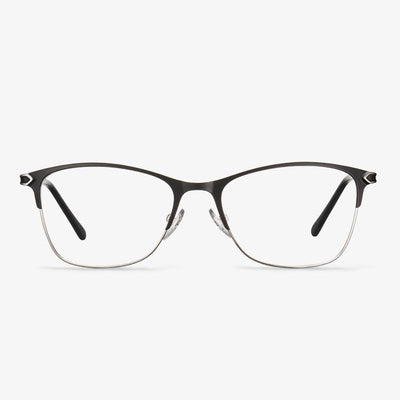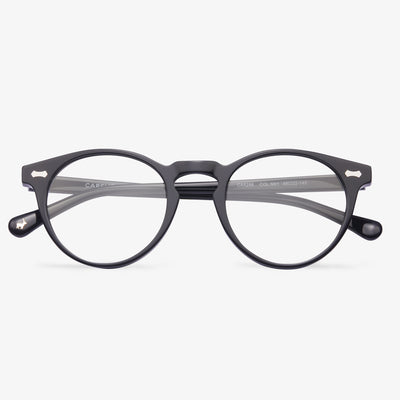5 Signs You Need Reading Glasses
In this section, we will list some signs you need reading glasses.
- You are over 40 years old. Everyone’s eyesight changes at a different rate, but most people develop presbyopia in their 40s. Presbyopia is a condition in which the eye strain to focus on nearby objects, which is different from farsightedness, a condition in which you can see distant objects clearly, but objects nearby may be blurry. Farsightedness is usually present at birth, but presbyopia develops during the aging process.
- If you find that you never seem to have enough light when reading, regardless of the room type or the number of lamps you have turned on, it may be time to get reading glasses. According to a study, a 60-year-old people requires three times as much light as a 20-year old to do the same task.
- If your eyes get tired when reading or working at your computer, you may need reading glasses. Do you find yourself dozing off at your computer, or do your eyelids get heavy when your reading or do detailed work? If so, you may be developing presbyopia, and you may need the reading glasses.
- Another sign you need reading glasses is that you are getting more headaches. Consistently straining your eyes to read or focus on craft could give more headaches. A headache right behind your eyes could be indicative of hyperopia. It is important to remember the 20-20-20 rule: every 20 minutes, look at something at least 20 feet away for 20 seconds. If your headaches persist, you should see an eye doctor and have a check.
- If you see halos, you may need reading glasses. When your lens cannot focus light into your retina, it makes your vision appear blurry. Thus, reading glasses can solve this problem.
Do I need reading glasses? After reading this post, you may have a basic understanding. If you need a pair of reading glasses, try Koalaeye glasses. They are stylish and cheap, and the glasses will be mailed to you with great convenience.
The origin of aspheric lens
The Visby glasses, unearthed in Gotland, Sweden, are the earliest aspheric lens found. The Vikings in the 11th century used it as a magnifying glass, and some of the best ones were made of silver, making them look like handicrafts. In 1667, Francis Smethwick grinds the first high-quality aspheric lenses and presents them to the Royal Society. That's a telescope with three aspheric elements. In 1956, Elgeet, which originally designed and manufactured optical instruments for the U.S. Navy, produced the world's first mass-produced aspheric lens for photography (Golden Navitar 12mm F1.2) for a 16mm film machine. Today, aspheric lenses are found in everything from tall telescopes to missile guidance systems to camera lenses. In the glasses we wear, the aspheric lens is familiar to consumers.
Plano Lenses vs Demo Lenses
When talking about the plano lenses, demo lenses will be talked about, too. Plano lenses are different from demo lenses. Demo lenses are nothing but lenses that are fitted into the demo frames at the optical showroom and workshops. The only purpose of demo lenses is to give a realistic aesthetic of the frame to the users so that they can get an idea of how it would look with corrective lenses. However, there is also no corrective power on demo lenses.
Compared with demo lenses, plano lenses provide good quality lenses that give your protection against harmful UV rays and blue light emitted from digital screens like laptops and desktops. In addition, you can also add an anti-glare coating to the plano glasses.
About Plastic Frames
It is usually divided into thermoplastic plastics and thermosetting plastics. Thermoplastics can be reworked under heat. Thermosetting plastics cannot. The plastic frame is usually made of nylon or composite material. Although it is a thermoplastic material, at regular temperature will not become soft. The plastics used to make frames are not always thermoplastic, but they can almost always be softened by heating. Thermosetting plastics are usually used only for small parts.
What Are Progressive Lenses?
Progressive lenses have grown in popularity and are one of the most common solutions to treat vision loss that occurs with age or presbyopia. This eye condition occurs when the eye loses some of its flexibility and ability to adjust to clear seeing objects at different distances. Presbyopia often occurs among adults who are over age 40 and is very easy to correct with a proper and prompt diagnosis.
Progressive lenses are often used to correct this eye condition. Progressive lenses are a modern alternative to bifocal glasses, which provides two prescriptions in a single set of glasses. Bifocal glasses are a better solution than carrying around multiple pairs of glasses. Progressive lenses were developed to resolve some of those common issues and to provide better aesthetics. Progressive lenses provide a smooth transition and can accommodate up to three prescriptions and are a replacement for both bifocals and trifocals.
About the early domestic anti-reflection coating lens
Chinese coated lenses appeared in the mid-1980s. At that time, Europe (such as France and Germany) and Asia (such as Japan, Singapore, and Taiwan) had already launched coated lenses to the market, and the grade of lenses was evaluated based on the quality of the anti-reflection effect. Among them, Germany and France were the two leading countries in technology. Technically, the use of French original film material (referred to as H2) can reduce the effect by 99.98% (refers to the light transmittance, the same below). Almost you can not see the reflection, but the material is expensive. Therefore, the coating lens which is currently used in the world is born. The anti-reflection effect is controlled at about 98%, so the coating cost is greatly reduced. And it is accepted by consumers because it presents various colors, especially green. At the same time, because at the same time, it can be easily distinguished from non-coated lenses. It can reflect the high-grade film lens, and it is accepted by the sales staff.
Are progressive lenses good for driving?
Progressive lenses can help you see close, far, and anywhere in between. That means progressive lenses are good for driving. So you don't have to change your glasses on the way. With progressive lenses, you can easily see all distances. Standard lenses are more affordable than premium lenses, but premium lenses offer a wider field of view and are ideal for drivers.











































